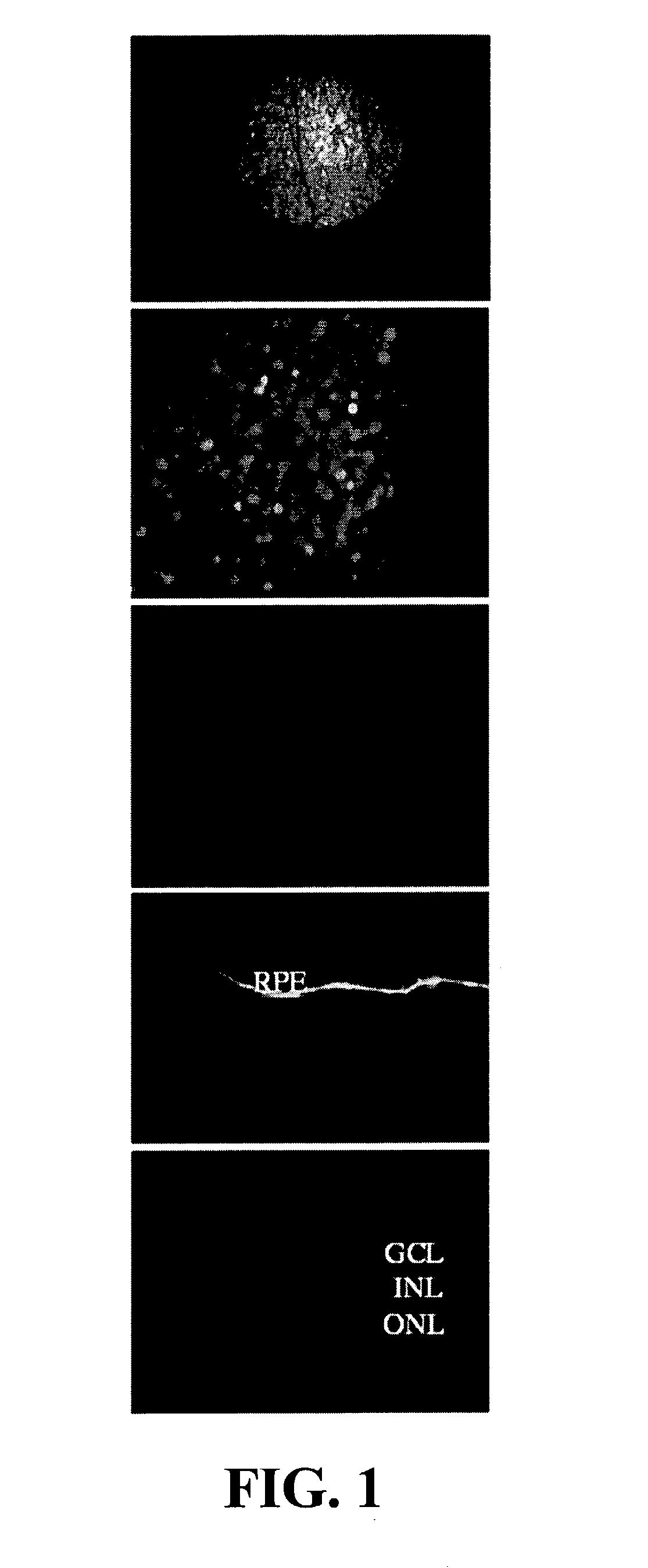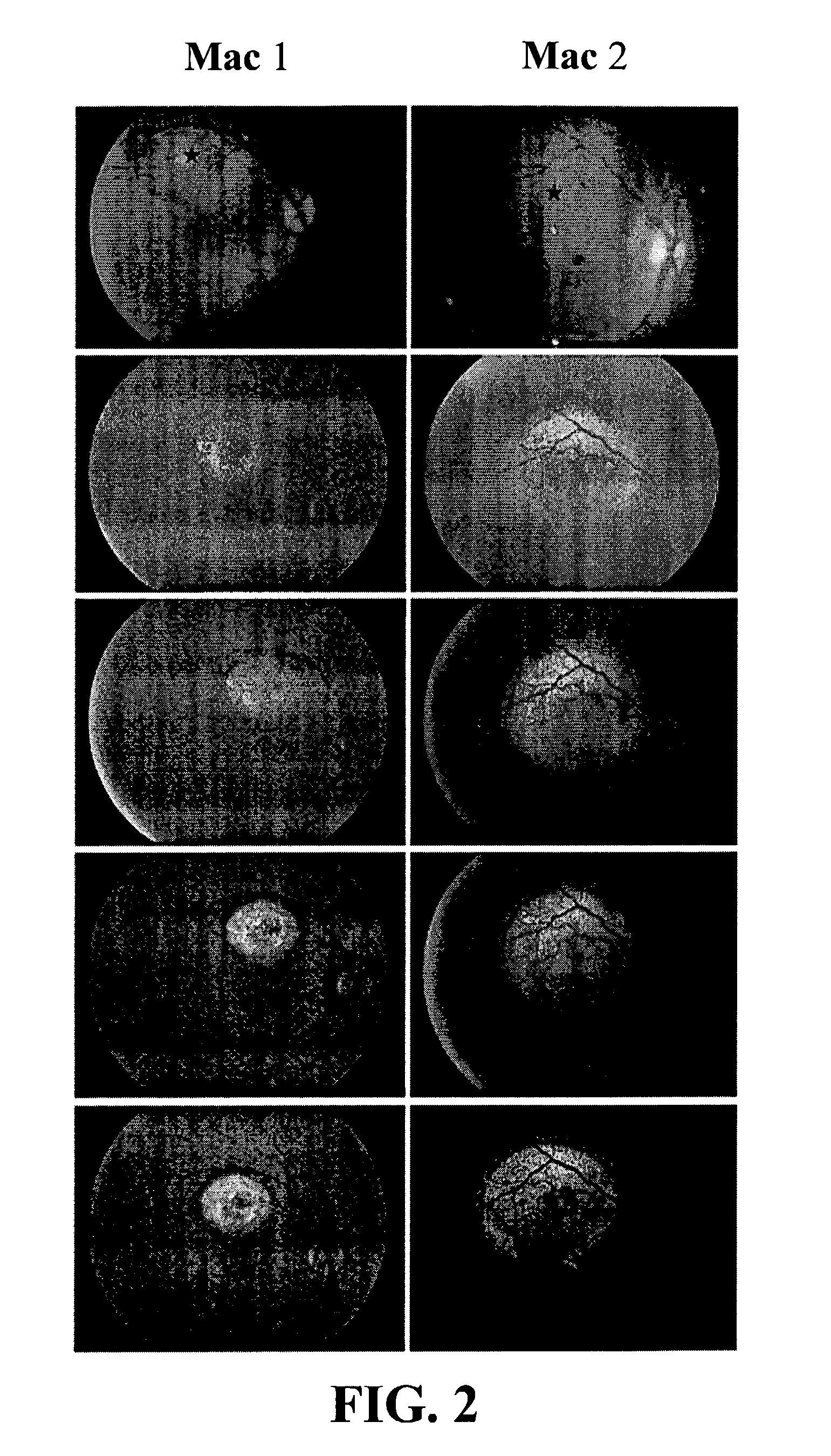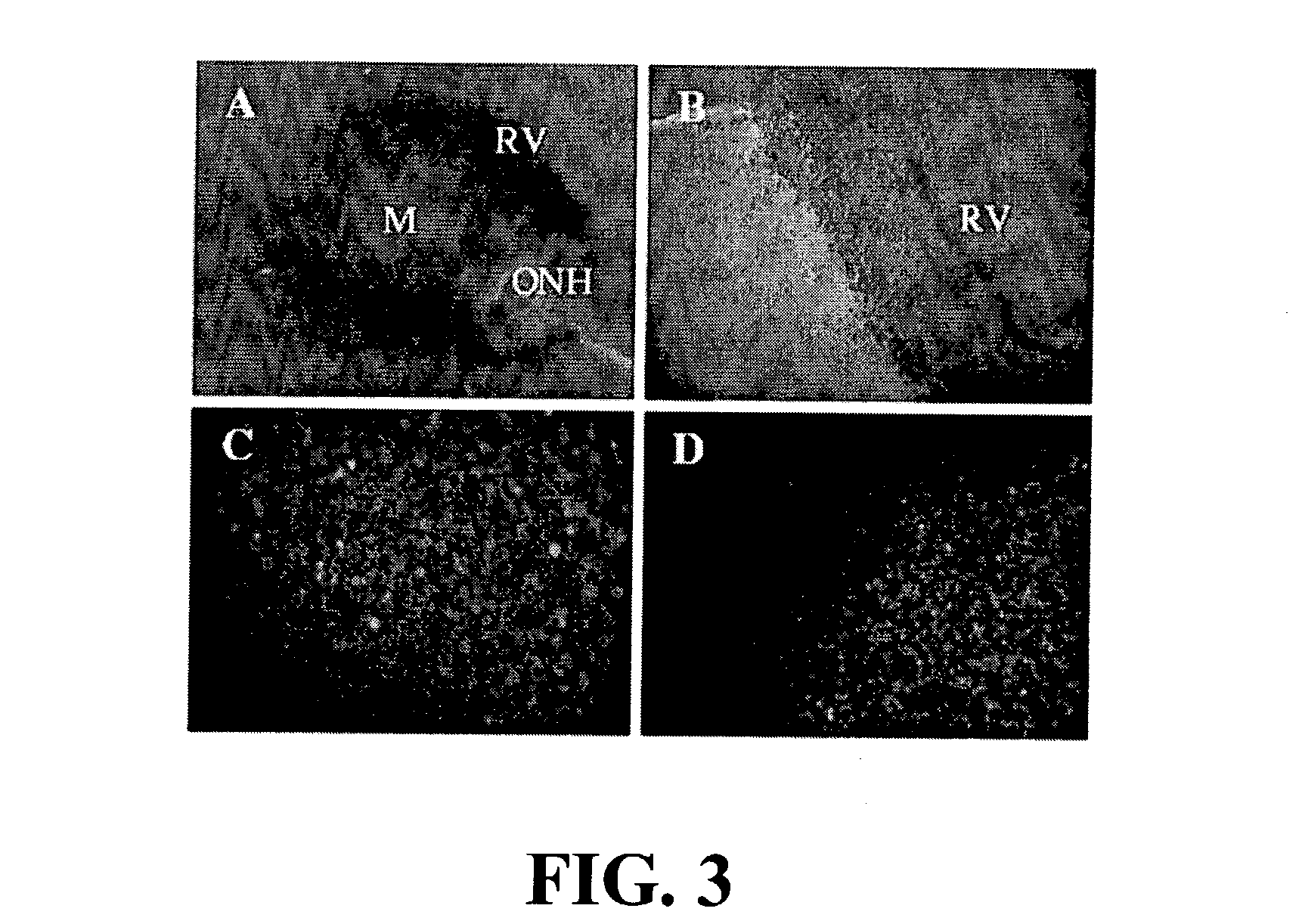Method and vectors for selectively transducing retinal pigment epithelium cells
a technology of retinal pigment and epithelium cells, applied in the direction of viruses/bacteriophages, biocide, genetic material ingredients, etc., can solve the problems of ineffective treatment, visual dysfunction eventually progressing to total blindness, and no effective treatment availabl
- Summary
- Abstract
- Description
- Claims
- Application Information
AI Technical Summary
Benefits of technology
Problems solved by technology
Method used
Image
Examples
example 1
Subretinal Delivery of rAAV-2 / 4. CMV.qfp in Rats
[0052] Subretinal injection of rAAV-2 / 4. CMV.gfp (4.times.10.sup.12 vg / ml corresponding to 8.times.10.sup.9 vg / injection) were performed on three Wistar rats. In retina flatmounts, using a fluorescence inverted microscope, rAAV-2 / 4-mediated gene expression was restricted to the sclera / choroid / RPE layer (FIG. 1B) and more specifically to RPE cells (FIG. 1D). No signal was ever detected in the neuroretina layer (FIG. 1C and E).
example 2
Subretinal Delivery of rAAV-2 / 4. CMV.qfp in Nonhuman Primates
[0053] To test the tropism of the rAAV-2 / 4 vector in a relevant preclinical animal model, subretinal injection of 40 .mu.l and 120 .mu.l of rAAV-2 / 4. CMV.gfp was performed via a transvitreal route in Mac1 and Mac2 resulting in retinal detachment outside and within the macula, respectively (FIG. 2). The rAAV-2 / 4 vector resulted in a detectable GFP signal (14 days p.i. in both animals with a maximum expression level .congruent.60 days p.i. (FIG. 2). While the GFP signal was homogeneous over the targeted area in Mac 1, Mac2 displayed a less intense GFP signal within the macula. This result is not surprising since in primates, RPE cells are strongly pigmented resulting in partial fluorescence quenching. Retinal flatmounts were obtained from Mac2 sixty-five days p.i. During the dissection, the chorod / RPE layer was separated from the neuroretina. However, during this process, pigmented RPE cells located between the two vascular ...
example 3
Vector Shedding After Subretinal Delivery of rAAV in Nonhuman Primate
[0054] To provide additional preclinical data from large animal models, the inventors have looked for vector shedding after rAAV delivery in the subretinal space of Mac1 and Mac2 primates. PCR was used to detect rAAV vector genome in several body fluids (Table 1).
1TABLE 1 detection of rAAV vector sequences by PCR in body fluids. serum lacrymal nasal urine feces MAC1 2 h-16 d 15'-2 h 15'-2 h negative negative MAC2 negative 15'-2 h negative negative negative D, days post infection, h, hours pi., and ', minutes p.i.
[0055] The sensitivity of the assay was first evaluated by incubating a known number of viral particles with saline before extracting the DNA as described (Favre, Provost et al. 2001). The results indicated that a threshold of 10.sup.3 to 10.sup.4 vg particles could be detected (FIG. 5A). Serum, lacrymal, and nasal samples were collected from 15 min to 2 months p.i. and analyzed by PCR to detect the gfp DNA...
PUM
| Property | Measurement | Unit |
|---|---|---|
| inverted fluorescence microscope | aaaaa | aaaaa |
| Live fluorescent retinal imaging | aaaaa | aaaaa |
| normal light microscope | aaaaa | aaaaa |
Abstract
Description
Claims
Application Information
 Login to View More
Login to View More - R&D
- Intellectual Property
- Life Sciences
- Materials
- Tech Scout
- Unparalleled Data Quality
- Higher Quality Content
- 60% Fewer Hallucinations
Browse by: Latest US Patents, China's latest patents, Technical Efficacy Thesaurus, Application Domain, Technology Topic, Popular Technical Reports.
© 2025 PatSnap. All rights reserved.Legal|Privacy policy|Modern Slavery Act Transparency Statement|Sitemap|About US| Contact US: help@patsnap.com



